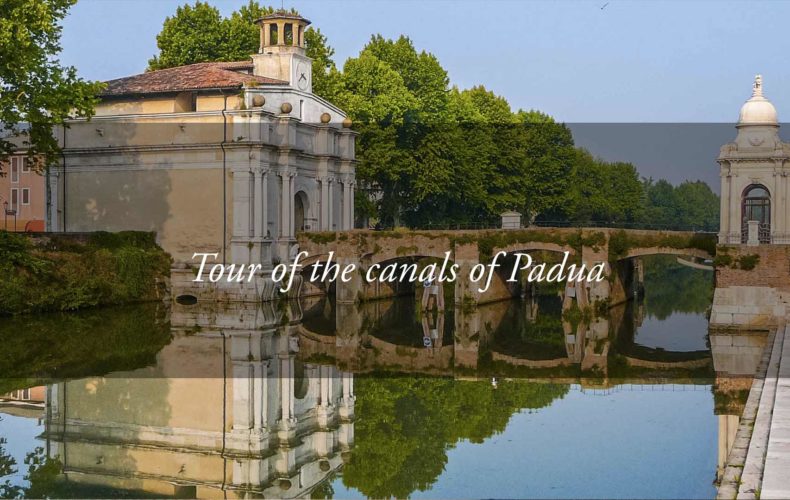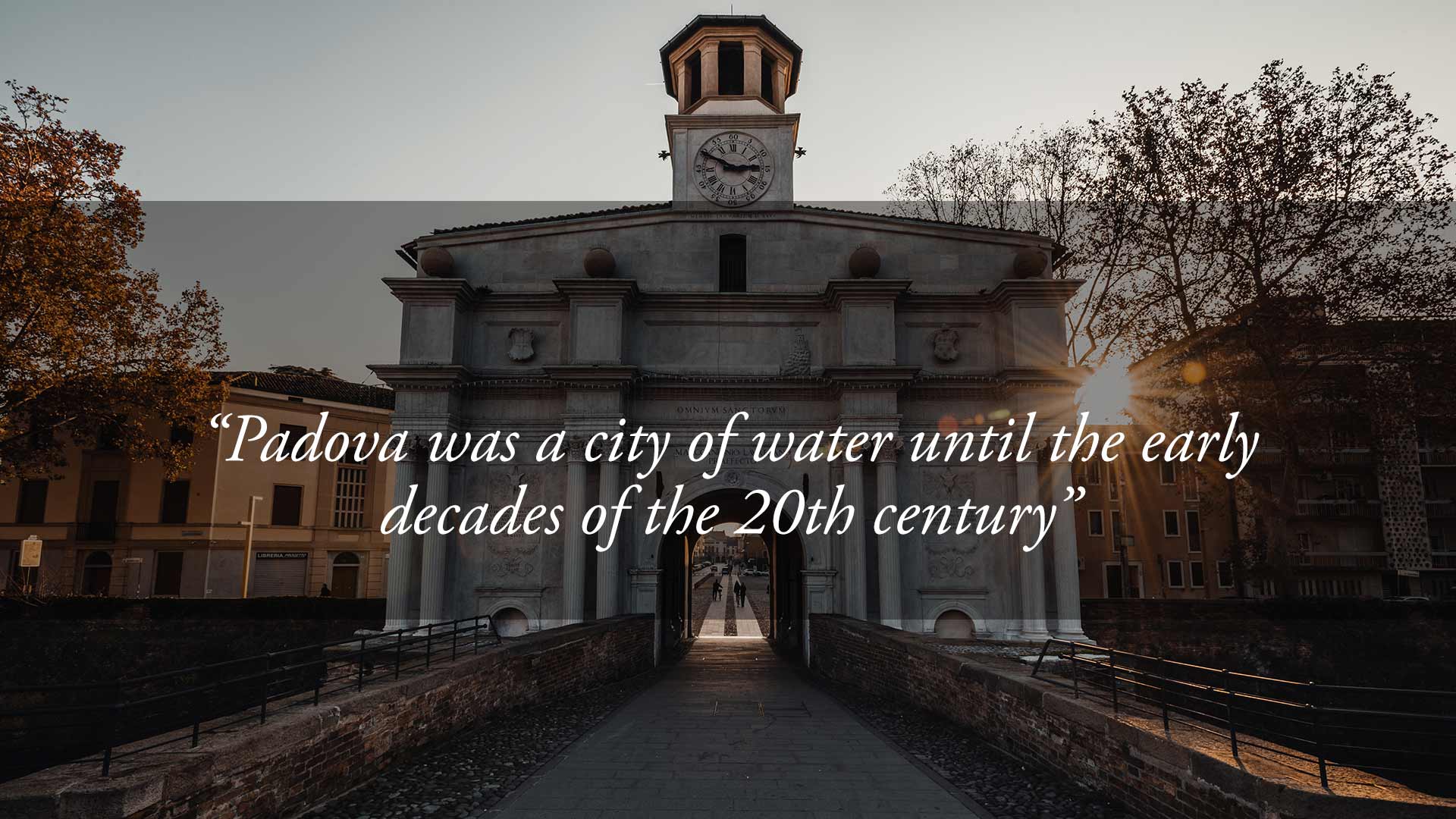
TOUR OF THE WATERWAYS IN THE CENTRE OF PADUA
The quintessential city of water is Venice. But many people are unaware that Padua, the inland city of the Most Serene Republic of Venice, known for its historic University officially founded in 1222, was also a city of water until the early decades of the 20th century. To this day, despite the covering of many of the main navigable canals in the city centre, Padua remains a city surrounded by canals, many of which are suitable for navigation.
Padua was crossed, in medieval times, by an internal canal (the Naviglio Interno) which was heavily used for the transport of goods and people. The commercial traffic coming from the Euganean Hills, the Bassa Padovana and Vicenza, as well as the traffic of nobles and people of all ranks who moved through the Porte Contarine in the direction of Venice and the sea: everything then came towards the Naviglio, unfortunately buried in the 50s to make room for car traffic and now no longer passable.
Tourist tours on the Padua waters
Starting from the 1990s, navigation in Padua came back to life for tourist purposes, and today it is possible to access charming routes that start from the Piovego and skirt the Renaissance walls built in 1509, after Padua was besieged by the Austrians. With 12 km of surrounding walls, many of which are located on navigable canals, Padua then became an impregnable city.

Tours on the waters of Padua, departing from the Piovego, take visitors first of all to see the Portello, an ancient river port with its beautiful 16th-century staircase, depicted in a painting by Canaletto. This was one of the most popular and lively areas of Padua, where “barcaroli”, “cavallanti” and “beccai”, known for their fights with students, used to gather. Still skirting the ancient 16th century walls, you pass the university citadel and come to the former slaughterhouse (Macello), a 19th century work by Giuseppe Jappelli, and then the Gardens of the Roman Arena, where you can visit Giotto’s famous Scrovegni Chapel.
The ancient bridges of Padua
Continuing along the waterways, we arrive at the navigation locks of the Porte Contarine, inspired by Leonardo da Vinci’s design, which, thanks to sophisticated hydraulic systems, allowed boats coming from the Piovego to go up, or down towards the Naviglio Interno. The journey continues through a picturesque succession of bridges and palaces to the ancient Ponte Molino and the medieval Ponte di San Leonardo, from where the first nucleus of the Jewish Ghetto was entered. Next, we cross the Ponte di San Benedetto, the Ponte dei Tadi and then the Ponte di San Giovanni delle Navi, where boats from Vicenza and the Euganean Riviera used to dock and which was used to unload fruit and vegetables for the markets in the squares. Along the Riviera Paleocapa, we finally reach the ancient Ponte di Sant’Agostino, near the old Ezzelini Castle with its ancient, imposing and famous defensive tower once known as the Torlonga, but converted in 1761 into an Astronomical Observatory and still known today as the Specola (Observatory).

The tour of the inland canals of Padua is just one of the possible navigation routes of its waterways, which hold many surprises and reveal places little frequented by mass tourism and therefore more suitable for an audience that is appreciative of discreet and exclusive experiences.
To organise a tour of Padua’s waterways during your stay at Hotel Tritone, you can write to us here or call (+39) 049 8668099.
